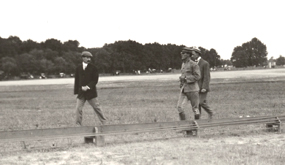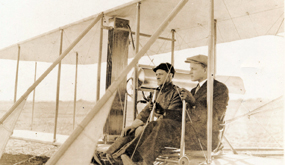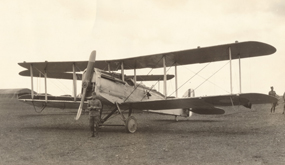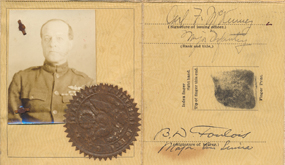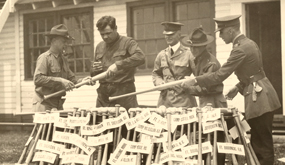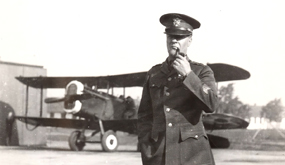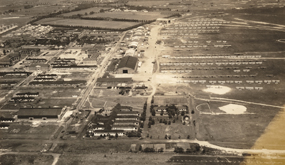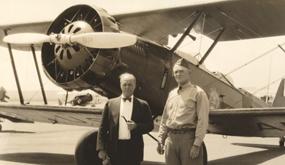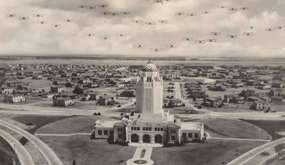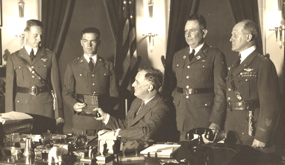Benjamin Delahauf Foulois (1879-1967) was a United States Army General who learned to fly the first military planes purchased from the Wright brothers in 1909. He became the first military aviator to pilot an airship, and he was the only pilot, navigator, instructor, observer, and commander in the heavier-than-air division of the U.S. Army from 1909 to 1911. From these experiences he made many mechanical improvements that were incorporated into subsequent models of airplanes. He designed the first radio receiving set ever used in an airplane and carried out the first radio/air reconnaissance missions. Foulois commanded the first aerial operations conducted by the US armed forces in enemy territory. He was commander of the First Aero Squadron, which participated in the Mexican Punitive Expedition in 1916, and was heavily involved in the first World War.
Heading into World War I Foulois was put in charge of the production, maintenance, organization, and operations of all American aeronautical equipment and personnel in the United States. He worked alongside Major General George Squier and the National Advisory Committee for Aeronautics on plans for the appropriation of $54 million to support 16 aero squadrons, 16 balloon companies, and nine aviation schools. Foulois continued his illustrious military career as Chairman of the Joint Army and Navy Technical Aircraft Committee and Chief of the Army Air Service, which carried the rank of major general. He was the longest living of the US military pioneers and remained an active advocate of military aviation until his death in 1967.
The Benjamin D. Foulois Collection includes twenty-four boxes of records pertaining to Foulois’ military career. This collection consists of records relating to the founding of US military aviation, beginning with procurement of the Wright Flyer in 1909 through the expansion of American air power in World War I. Included is a rich assortment of photographs, oral histories, service records, and hundreds of official military cables documenting the rapid advancement of aviation and military technology from this early period.

